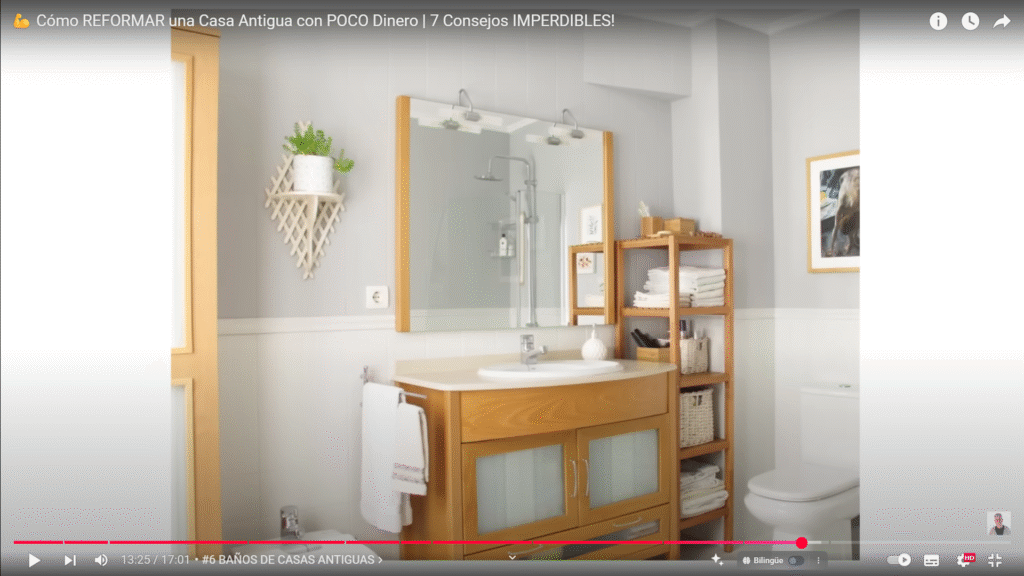Remodeling your home? Here’s what no one tells you (and that can save you thousands of dollars)
Buying a house is exciting. Renovating it to make it your ideal home is even more so. But it can also be a constant source of headaches if you don’t make the right decisions from the start. Many homeowners rush into renovations without clear planning, and this often results in cost overruns, structural problems, and solutions that only work in the short term.
Marcelo, an architect with years of experience in home renovations, shares the most common mistakes he’s seen throughout his career, and most importantly: how to avoid them . If you’re about to renovate or expand your home, these 7 tips will help you make smarter decisions and protect your investment.
Why is it so important to plan a renovation well?
Renovating a home isn’t just about aesthetics. It involves addressing the structure, hidden infrastructure, and elements that ensure the property’s safety and habitability.
A common mistake is to think that painting, replacing the flooring, or updating the furnishings is enough. But if underlying problems (roofing, plumbing, electrical work) aren’t identified, these repairs are likely to be short-lived.
That’s why it’s key to act with a long-term vision, analyzing what’s worth preserving and what needs to be completely replaced.
Benefits of a well-planned renovation
- Long-term savings : avoid unnecessary expenses on subsequent corrections.
- Increased durability : Ensures new materials and installations last for decades.
- Greater safety : reduces the risk of electrical failures, leaks or seepage.
- Property valuation : A well-executed renovation can significantly increase the value of your property.
- Peace of mind : Living in a healthy, functional, and well-maintained home improves your quality of life.
7 key tips before starting a renovation
1. Negotiate with the structure, not against it
It’s not always possible to modify a home the way you’d like. Trying to change minimal dimensions, such as enlarging a room by 30 centimeters, can be costly and unnecessary.
Before knocking down walls, explore creative solutions with your architect to work within the existing dimensions , avoiding pointless demolition.
The key is to accept the limits of the structure and optimize what already exists.
2. Renew the entire infrastructure if the house is old
Pipes, electrical cables, and drains are often hidden, but their condition is crucial.
If the home is more than 50 years old, the plumbing is likely made of outdated materials such as lead or ceramic. These are not only fragile but also dangerous.
It’s recommended to replace the entire infrastructure with modern PVC, polypropylene, and cable systems , all with a 50-year warranty.
Don’t skimp here. Renovating without updating the interior is like painting a car without checking the engine.
3. Listen to what your home “says”: symptoms matter
A house speaks through its signs:
- Cracks
- Strange odors (like sewage)
- Humidity
- Peeling paint
- Hollow floors
All of these symptoms indicate structural, moisture, or internal installation problems . Don’t ignore them or cover them up with cosmetic patches. Consult a professional and analyze the underlying causes.
A timely consultation costs less than a poorly done repair.
4. Check roofs and ceilings from day one
Stains on roofs are a clear warning of leaks. Whether the house has a slab or metal roof, it’s vital to check the condition of the roof.
For slabs, the solution may be waterproofing with liquid or asphalt membranes .
On metal roofs, it’s common to find rusty sheets or sheets covered with patches that no longer work. In these cases, the safest option is to cover them with new roofs without dismantling the original structure.
Investing in your roof ensures protection for your entire home.
5. Don’t underestimate the condition of the floor
The floor also speaks volumes. Wooden floors can be restored with sanding and lamination, but they must be firm. In older homes, the floorboards may have rotted from moisture. If it sounds hollow or bouncy when you step on it, check underneath.
- Granite mosaics : can be polished and made to look like new.
- Limestone tiles : they should not be polished because they lose their color.
- New ceramic or porcelain floors : can be laid over existing floors if the base is level.
Avoid painting floors: it’s cheap, but short-lived and difficult to replace later.
6. Renovating the bathroom without changing the pipes is a mistake.
The bathroom is one of the most frequently renovated spaces, but also one of the most troublesome.
If old plumbing isn’t replaced, the new aesthetic fixtures are likely to fail quickly.
How do you know if your pipes are new?
- If the bathroom still has the original tiles, it probably hasn’t been renovated.
- If there are signs of breakage or changes in the ceramics, it is a sign of past renovations.
I invested in renovating the entire water and sewage system. Don’t do a partial renovation that turns into a nightmare later.
7. Do the math: make sure the renovation is truly profitable
Before renovating, do this calculation:
Purchase cost + renovation cost < cost of building from scratch
If that result isn’t achieved, the renovation isn’t worth it.
Often, after an extensive renovation, all that remains of the original house are the exterior walls. In that case, it wasn’t a good investment.
That’s why it’s essential to have the advice of an experienced architect who can help you balance your needs with what the house can offer.
Renovating well means transforming your home (and your future)
Every old house has the potential to become a modern, functional, and beautiful home. But only if the time, processes, and limits imposed by its structure are respected.
A renovation shouldn’t be a leap into the dark, but rather a calculated and well-informed decision . Consulting with professionals is a minimal investment compared to the benefits a well-planned project can offer.
Don’t rush. Analyze every corner, listen to what your home is telling you, and make decisions with a cool head and a warm heart. Start building the home you’ve always dreamed of today, without wasting unnecessary time or money.



